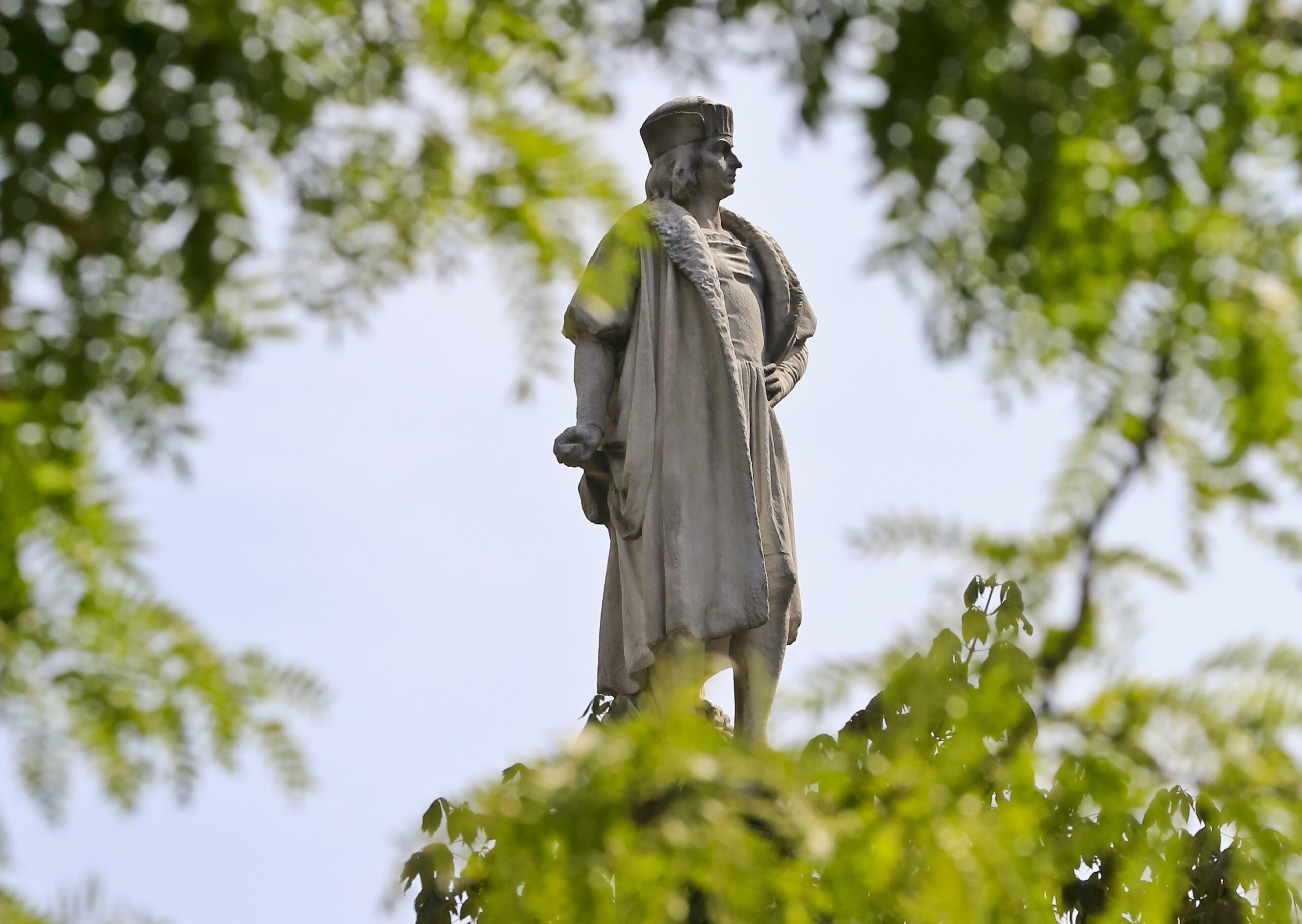
All together now: Will the far-left play into Steve Bannon’s hands?
My conversation with Stephen Bannon persuaded me that, if nothing else, he is a deadly serious political strategist. The core of his strategy: rev up racist sentiment and bait Democrats and liberals into standing up for racial decency, but flaking off into identity politics that will keep the backlash going. And here is where it is urgent not to take Bannon’s bait.
Which brings me to Christopher Columbus.
The movement to take down statues commemorating Confederate leaders was already well along before the disgrace of Charlottesville, and good riddance to them. But as President Trump himself said in his infamous rant against the press, what about George Washington? What about Thomas Jefferson. They held slaves. And so they did.
Last week in Baltimore, some far-lefties took a sledgehammer to a statue of Christopher Columbus. A video uploaded to YouTube declared:
Christopher Columbus symbolizes the initial invasion of European capitalism into the Western Hemisphere. Columbus initiated a centuries-old wave of terrorism, murder, genocide, rape, slavery, ecological degradation, and capitalist exploitation of labor in the Americas. That Columbian wave of destruction continues on the backs of Indigenous, African-American, and brown people.
What kind of a culture clings to those monuments in 2017? Part of our evolution as humans requires tearing down monuments to destructive forces and tearing down systems that maintain them.
Now, this requires some careful thought. The speaker is not entirely wrong, but he manages to sound like central casting’s parody of a lefty. Unless we all want to “return” to Europe or wherever our ancestors came from, America is our home and Columbus was among the first European explorers.
What’s required is a long-overdue process of truth, reconciliation, and healing. Even before the latest outburst of virulent racial hate encouraged by our president, Confederate statues were coming down all over the former Confederacy. That’s a good start.
But do we really want to tear down statues of Washington, Jefferson, and Columbus?
In some ideal, utopian world, that may feel overdue. But in the real world of politics, will it contribute to healing—or serve as raw meat to the Bannons?
For better or worse, there is no central committee of American progressivism. Most of us may conclude that the right place to draw a bright line is at statutes commemorating the Confederacy and slavery. But that doesn’t stop people acting on their own behalf.
In Oberlin, my alma mater and a long-integrated community, the city council decided to change the name of Columbus Day to Indigenous People’s Day.
That’s more constructive than demolishing statues, though it is likely to enrage many Italian-Americans. Changing the name of Ohio’s state capital will be a little tougher.
I’m old enough to remember similar left/far-left troubles in the 1960s, when ultra-radicals tried to hijack efforts to win broad public support for ending the Vietnam War and to ending segregation. The banners and demands of some of the people I marched with made me wince, because they alienated the broad public opinion we were trying to win over, and played into the hands of the far right.
On the other hand, I have to be honest enough to say that sometimes liberals need radicals. The liberals who wanted to build a labor movement in the 1930s needed the radicals who illegally mounted sit-down strikes. The liberals of the 1960s needed the radicals who broke unjust laws.
Some of the slogans of the far left of that era seemed self-isolating—“Ho, Ho, Ho Chi Minh, the NLF is gonna win.” But hold on, the NLF did win. Today America has trade deals with communist, unified Vietnam. And communist Vietnam is not about to invade San Francisco. We all would have been better off if the war had been settled sooner.
So I don’t want to be glib in dismissing those who would go farther than I, in dismantling the emblems of the disgraceful aspects of American history. But a little reflection and humility would help on all sides.
South Africa has set an example of how to begin this process. There, painful compromises moved the process forward. The national anthem became the haunting, black “Nkosi Sikelel’ iAfrika,” but the white Afrikaners got to keep the capital’s name, Pretoria. The province of Natal, a colonialist name, became KwaZulu-Natal. There was some land redistribution but not nearly enough. When Mandela became president, he went out of his way to be a big fan of the white folks’ favorite rugby team, the Springboks. And the country is still horribly segregated, by class as well as race.
The bitter truth is that half of America’s founding fathers held slaves. And the other half assented to the continuation of slavery under the Constitution. That’s why we had to fight a civil war almost a hundred years later.
We can’t undo that history. But we need to come to terms with it. And we need to rectify the shameful parts of the legacy that live on in the present. I can’t believe that taking sledgehammers to statues of Washington, Jefferson, and Columbus will help.
An earlier version of this article appeared at The Huffington Post. Subscribe here.

